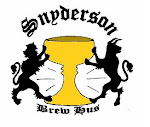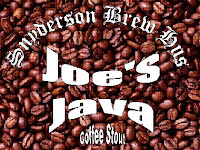Four years ago I began the magnificent hobby known as home brewing. My first beer, Perkele Pils, was a reasonable success. While brewing that first batch, I felt compelled to share my freshman efforts with those I knew and/or respected. As such, I started the brog (brew-log). Unfortunately, after several valiant efforts, other aspects of life pushed this hobby to the back burner and my brog lapsed.
At the beginning of this year I made a pledge: to dedicate myself to brewing regularly and to becoming a better brewer with every batch (which doesn't necessarily mean a better beer product.) 2009 has proved to be a good brewing year and, although I have experienced some of the breaks, I have learned much and enjoyed even more. As such, it seems only appropriate to begin sharing these trials, tribulations, and (of course) successes again. What to expect: brewing experiences, beer tastings, competitions, label designs, and more.
So, grab a beer (preferably one of mine) and enjoy the ride. (Techincally, you don't have to drink to follow this brog but it helps.)
Cheers!






